F1 drivers deceased behind racing car steering wheel between 1956 and 1960
Max Mosley, when President of the FIA:
"We're doing everything to reduce the probability of injury on the understanding it can never be zero."
Denny Hulme, Formula 1 driver:
“We didn’t know any better in the old days. Now we’ve got the most incredibly hygenic circuits you have ever seen. Some people criticise them. They say it’s terribly boring motor racing. Yes, compared to the old Nürburgring it is… but it’s better than going to a funeral every Tuesday morning.”
Drivers with their names marked in red died at an official Formula One Championship race.
On this list are only the drivers who competed on Indianapolis 500 plus at least one FIA World Championship race.
To know more about safety in Formula 1, development in safety after incidents and tragedies, check article about safety.
1956 - Louis Rosier (F)
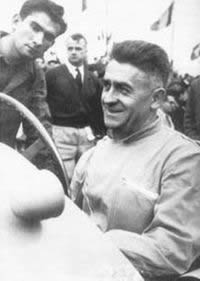
He participated in 38 Formula One World Championship Grands Prix, debuting on 13 May 1950. He achieved 2 podiums, and scored a total of 18 championship points.
He won the Dutch Grand Prix twice in consecutive years between 1950 and 1951, the Circuit d'Albi, Grand-Prix de l'Albigeois and the 24 Hours of Le Mans with his son Jean-Louis Rosier. Rosier owned the Renault dealership of Clermont-Ferrand.
Louis Rosier died of injuries he sustained in a crash at the Montlhéry track, south of Paris, France, on 7 October 1956.
Grand Prix Starts 38
Grand Prix Wins 0
Pole Positions 0
Grand Prix Points 18
1957 - Ken Wharton (GB)
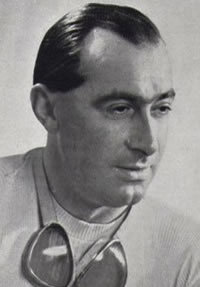
Wharton was immensely successful in hillclimbing, winning the British Hill Climb Championship every year from 1951 to 1954; he remains the only driver to have claimed four successive BHCC titles.
Ken participated in 15 Formula One World Championship Grands Prix, debuting on May 18, 1952 and scored a total of 3 championship points. He also competed in some non-Championship Formula One races. He also competed in rallies and won the Tulip Rally three times driving a Ford.
He was killed 1955, when he crashed driving a Ferrari Monza at the New Zealand circuit of Ardmore.
Grand Prix Starts 15
Grand Prix Wins 0
Pole Positions 0
Grand Prix Points 3
1957 - Eugenio Castellotti (I)
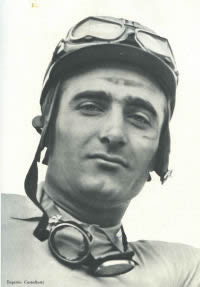
After being signed by Scuderia Ferrari, Eugenio Castellotti participated in 14 World Championship Grands Prix, debuting on January 16, 1955. He secured one pole position, achieved 3 podiums, and scored a total of 19.5 championship points. He also participated in several non-Championship Formula One races.
Castellotti won the March 1956 12 Hours of Sebring at Sebring, Florida. He followed this triumph by winning the Mille Miglia race in Brescia and the Grand Prix for sports cars in Rouen, France.
He was killed during a private Ferrari test session at the Modena Autodrome. Castellotti was testing a new Ferrari for the 1957 12 Hours of Sebring.
He crashed against a curve of the Autodromo and his body was hurled 95 meters. He had just been told to accelerate his speed so that he could average 140 km/h. Doctors said Castellotti died instantly from a fractured skull. Castellotti was considered the greatest Italian driver since Alberto Ascari.
Grand Prix Starts 14
Grand Prix Wins 0
Pole Positions 1
Grand Prix Points 19,5
1957 - Alfonso de Portago (E)
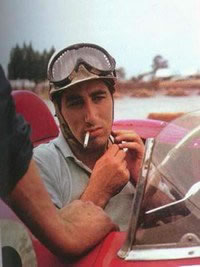
Spanish driver Alfonso Antonio Vicente Eduardo Angel Blas Francisco de Borja Cabeza de Vaca y Leighton marquis of Portago, best known in racing circles as Alfonso de Portago. On horseback de Portago twice attempted the fearsome fences of the Aintree Grand National, as well as taking part in the Cheltenham Gold Cup. He flew an aeroplane under a bridge, and just to complete the set he also represented Spain in the bobsleigh at the Winter Olympics, finishing fourth in the two-man event in 1956. This multi-talented individual, a Spanish marquis, co-drove a Ferrari to second place in the British Grand Prix at Silverstone in 1956. He drove the first 70 laps before handing over to Peter Collins, who completed 30 more. They finished a lap down on the winner, Juan Manuel Fangio.
Aged only 28, he crashed towards the end of the Mille Miglia sports-car race over public roads in Italy in May 8th 1957, about forty miles (68 km) from Brescia, the starting and finishing point of the 1,000 mile (1609 km) race. His co-driver Edmund Nelson, 5 children and 10 adults were also killed and many more injured, leading to the end of the Mille Miglia as a serious race. They were in third place at the time. Tire on his 4.5 liter Tipo 335 Ferrari blow, causing the car to go into the crowd lining the highway. He was traveling at 250 km/h when the tire went flat. On picture left, Marquis de Portago before the start of the Mille Miglia Road Race 1957.
Grand Prix Starts 5
Grand Prix Wins 0
Pole Positions 0
Grand Prix Points 4
1957 - Piero Carini (I)
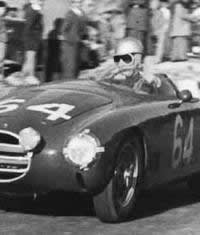
He was born in Genua Italy, and died in Saint Etienne, France.
He participated in three World Championship Grands Prix, debuting on July 6, 1952. He scored no championship points. He also participated in several non-Championship Formula One races.
He was killed racing a Ferrari Testa Rossa sports car in the 1957 St-Etienne event. His car veered across the central barrier and collided head-on with a similar machine.
Grand Prix Starts 3
Grand Prix Wins 0
Pole Positions 0
Grand Prix Points 0
1957 - Bill Whitehouse (GB)

Bill started racing in a Cooper 500 in 1949 in 500 cc Car Club National races (later Formula 3).
Several wins and top placings followed and through this he became friends with fellow car dealer Bernie Ecclestone.
He participated in one Formula One World Championship Grand Prix, on 17 July 1954. He retired from the race with fuel system problems.
He was killed in a Formula Two crash at the Reims-Gueux Circuit driving a privately-entered Cooper T39. Later in that race the American Herbert MacKay-Fraser was also killed.
Grand Prix Starts 1
Grand Prix Wins 0
Pole Positions 0
Grand Prix Points 0
1957 - Herbert Mackay-Fraser (USA)
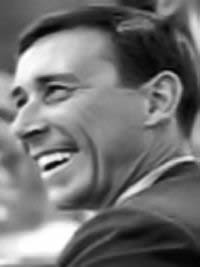
Herbert Mackay-Fraser was a slightly mysterious figure. You can find different dates and places of birth for him and his name is odd because his father was simply Fraser and his mother was not a Mackay. He did not discover car racing until he was 31. He made his racing debut at the end of 1953, in a race in Reno, at the wheel of a Jaguar XK120. He also shared a Lotus at Le Mans with Colin Chapman and built a reputation as an able racer. In the summer of 1957, BRM offered him a chance in F1 for the French GP at Rouen. Mackay-Fraser did a good job, running sixth behind the Maseratis and the Lancia-Ferraris until his transmission failed.
A week later, on July 7, 1957, he was entered for the 1957 French Grand Prix de Reims in a Maserati, and qualified well. He retired from the race and scored no championship points. A week later he was killed in the Coupe de Vitesse Formula 2 race at Reims-Gueux Circuit in a factory Lotus 11 sports car, when he crashed his Lotus. He was going well until, for reasons unknown, he arrived far too fast in the hairpin. The car ran out of road and went on to the grass before it ran over a low earth bank and rolled. Drivers then preferred not to wear seat belts and Fraser was thrown out and suffered serious injuries on landing. A helicopter was on hand to fly him to hospital in Reims, but he died during the flight. Before in that race the British driver Bill Whitehouse was also killed. He was the first Lotus driver to die in one of the factory cars.
Grand Prix Starts 1
Grand Prix Wins 0
Pole Positions 0
Grand Prix Points 0
1958 - Archie Scott-Brown (GB)
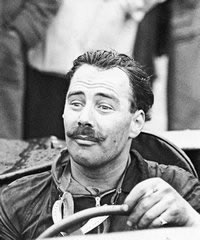
William Archibald Scott Brown participated in one Formula One World Championship Grand Prix on 14 July 1956, scoring no championship points. He also attempted to qualify for the Italian Grand Prix in the same year, but was excluded due to his lack of the required International License, his disability precluding the granting of such a license at the time. His mother had suffered from German measles while pregnant, and Archie was born with a deformity which left him with shortened legs and a withered left arm - yet through determination, several operations and ability he carved out a successful career as a sports-car driver in the 1950s. Tremendous determination meant that Archie was able to lead a normal life, although he never grew over 150 cm tall. Asked about the possibility of the Lister's notoriously poor brakes failing completely, he responded that he would "carry on without them, old boy".
He was mortally injured on 18 May 1958 during an accident in a sports car race at Spa-Francorchamps, driving a Lister Knobbly and dueling for the lead with Gregory. He died in hospital the following day, less than a week after his 31st birthday.
Grand Prix Starts 1
Grand Prix Wins 0
Pole Positions 0
Grand Prix Points 0
1958 -Erwin Bauer (D)
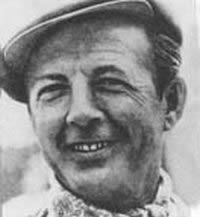
Erwin Bauer sole race in the Formula One World Championship came in 1953 with privately-entered Veritas in his one World Championship Grand Prix race at the Nürburgring German Grand Prix.
This was the very same track where he was killed five years later in a 2-litre sports Ferrari where, not realizing he had passed the chequered flag, kept on racing and crashed fatally on what was supposed to be his slowing-down lap.
Grand Prix Starts 1
Grand Prix Wins 0
Pole Positions 0
Grand Prix Points 0
1958 - Luigi Musso (I)
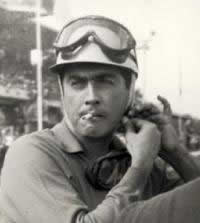
Musso began his racing career driving sports cars before debuting on the Formula One circuit on 17 January 1954, driving a Maserati. In 1954 he won the Coppa Acerbo, a non-championship Formula One race. At Zandvoort, in the 1955 Dutch Grand Prix, Musso placed third in a Maserati. At the end of the 1955 Formula 1 season he switched to Ferrari. He shared victory in the 1956 Argentine Grand Prix with Juan Manuel Fangio, however his season was cut short after a crash in a sports car race at Nürburgring.
In 1958, he picked up two second place finishes in his first three races but was killed in an accident during the 1958 French Grand Prix at frighteningly fast Reims circuit. Musso's Ferrari hurtled off the course on the 10th lap of the 50 lap race. He was being thrown from his Ferrari off the Reims' track at the tricky Muizone Curve while holding second place and was killed instantly. He become the first driver to be killed during a world championship Grand Prix and not in or on the way to hospital.
Grand Prix Starts 24
Grand Prix Wins 1
Pole Positions 0
Grand Prix Points 44
1958 - Peter Collins (GB)
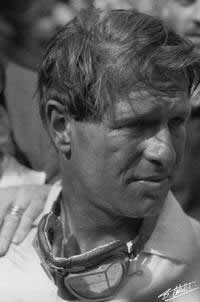
He participated in 35 World Championship Grands Prix, debuting on 18 May 1952 drive for the lowly HWM team, replacing Moss. He won 3 races, achieved 9 podiums, and scored a total of 47 championship points. Collins left after the 1953 season. Following spells driving for Vanwall and Maserati, and one brief outing in a BRM which ended with a crash in qualifying, Collins was signed to the Ferrari team for the 1956 F1 season.
Collins was on the verge of becoming Britain's first F1 World Champion when he handed his Lancia-Ferrari D50 over to team leader Juan Manuel Fangio after the latter suffered a steering-arm failure toward the end of the Italian Grand Prix at Monza. This selfless, team-orientated action gained Collins immense respect among the Italian racing tifosi, and the gratitude and admiration of Enzo Ferrari himself, a man notoriously hard to please.
During German Grand Prix, pushing hard to keep pace, Collins lost control of his car and disappearing over a bank. Collins was thrown out of his Ferrari, hit a tree and sustained critical injuries to his head. Despite being airlifted to hospital, Collins died later that afternoon.
Grand Prix Starts 32
Grand Prix Wins 3
Pole Positions 0
Grand Prix Points 47
1958 - Peter Whitehead (GB)
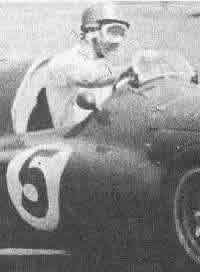
He participated in 12 World Championship Grands Prix, debuting on 2 July 1950. In his career he achieved a single podium, and scored a total of 4 championship points. He also drove in several non-Championship Formula One races. In addition to his Formula One career he shared victory in the 1951 24 Hours of Le Mans race with Peter Walker, racing for Jaguar. Peter Whitehead is notable as the first person to whom Enzo Ferrari ever sold a Formula One car: a Ferrari 125.
Whitehead's last great performance was at Le Mans in 1958 where he came second in an Aston Martin, sharing the driving with his half-brother Graham Whitehead.
A couple of months later Peter and Graham were competing together in the Tour de France, when their Jaguar crashed off a bridge into a 10 meter ravine at Lasalle, after overturning twice, with Graham at the wheel. Graham was badly injured, but Peter was killed instantly.
Grand Prix Starts 10
Grand Prix Wins 0
Pole Positions 0
Grand Prix Points 4
1958 - Stuart Lewis-Evans (GB)
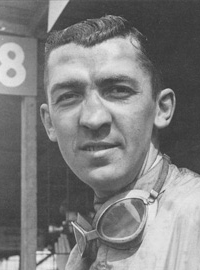
Stuart Nigel Lewis-Evans was a one of promising British F1 drivers of this time. He participated in 14 Formula One World Championship Grands Prix, debuting on 19 May 1957. Ecclestone was the manager of this promising British F1 driver. He achieved two podiums, and scored a total of 16 championship points. He also achieved two pole positions.
In his first Formula One race, the 1957 Monaco Grand Prix, he finished fourth in an inferior Connaught Type-B, beaten only by multiple winners Fangio and Brooks, and Masten Gregory in one of the dominant Maserati 250F cars.
He crashed heavily at the dusty Ain-Diab circuit during the season final race in September 1958. Moroccan Grand Prix.
His Vanwall engine seized 10 laps from the end of the race and sent him lurching into barriers at high speed, and his car burst into flames.
He suffered serious burns when he was sprayed with oil, which then ignited. The medical facilities were rudimentary and Lewis-Evans was flown back to the UK on a chartered jet and admitted to a specialist burns unit in East Grinstead. He died in hospital of his burn injuries six days after the accident. His death cast a pall over Vanwall's victory in the 1958 Constructors' Championship, an achievement to which Lewis-Evans had contributed significantly.
Formula 1 never returned to Morocco and there has never been another World Championship race in North Africa.
Grand Prix Starts 14
Grand Prix Wins 0
Pole Positions 0
Grand Prix Points 16
1959 - Jean Behra (F)
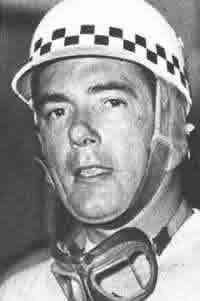
Jean Marie Behra, nicknamed Jeannot, was a France Formula One driver who raced for the Gordini, Maserati, BRM, Ferrari and Porsche teams. He raced motorcycles for Moto-Guzzi prior to changing to sports cars and Grand Prix racing. He hit the headlines when he won the non-official 1952 Reims Grand Prix. Between then and 1959 he scored many victories, but none in Formula One championship races. In fact, he is the second in records for leading the most laps without ever winning an official Grand Prix, 107. First on this list is Chris Amon with 183 laps. In 1957, when he finished fourth in the drivers' championship, he registered his best-ever grand prix result in Argentina when he finished second to team-mate Juan Manuel Fangio. He was heading for victory in the British Grand Prix when he suffered clutch failure. He is one of four men with nine podiums but no wins (since 2015)in official Formula 1 race, the others being Eddie Cheever, Martin Brundle and Romain Grosjean.
Bahra crashed his Porsche RSK in rainy weather in the sports car race that preceded the German Grand Prix at AVUS, in Berlin, Germany (meeting that also included the only championship German GP to be held at AVUS: Tony Brooks won it in a Ferrari). He lost control in the pouring rain, while going 180 km/h. The Porsche began to fishtail with the tail of the car going higher and higher up the slick, steep bank. Then the Porsche spun and went over the top of the banking, with its nose pointing toward the sky.
It landed heavily on its side on top of the banking. He was thrown from his car, launched into the sky and after hitting a flagpole landed into the trees. The flagpole toppled over when Behra collided with it, about halfway to its top. He broke most of his ribs in addition to the skull fracture which killed him.
Currently, AVUS (acronym for "Automobil Verkehrs und Ubungs Strasse") is a vital part of the German public highway system as Autobahn A 115.
Grand Prix Starts 52
Grand Prix Wins 0
Pole Positions 0
Grand Prix Points 51,14
1959 - Ivor Bueb (GB)

Ivor Léon John Bueb was a sports car racing and Formula One driver from England. He was more famous in sports-car racing, and actually co-drove the winning Jaguar in the 1955 Le Mans 24 Hours - the race marred by the horrific crash when a car flew into the crowd, killing the driver (Pierre Levegh) and more than 80 spectators. He won again at Le Mans in 1957, this time driving with Ron Flockhart in another Jaguar.
The following year he raced Bernie Ecclestone's Connaught at Monaco, and drove a Formula Two Lotus at the German Grand Prix. In 1959 he had two outings for BRP, firstly a non-qualification at Monaco, then another Formula Two entry at the British Grand Prix. He took part in six GPs for various teams between 1957 and 1959, without collecting any championship points. He also participated in numerous non-Championship Formula One races.
Bueb died from injuries sustained when he crashed his BRP Cooper-Borgward Formula Two car at Charade circuit near Clermont-Ferrand in France.
Charade circuit was never very popular with the F1 set as the track tended to have a lot of stones on it from the nearby mountains - and it was there in 1972 that Helmut Marko (then a BRM driver but now a big wheel in the Red Bull team) lost an eye after a stone thrown up by another car went through his helmet visor.
Grand Prix Starts 5
Grand Prix Wins 0
Pole Positions 0
Grand Prix Points 0
1960 - Harry Blanchard (USA)
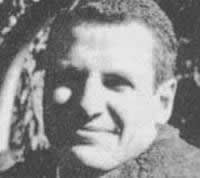
His only Grand Prix appearance came at the wheel of a Porsche RSK Formula 2 car in the first US Grand Prix at Sebring in 1959. He finished seventh and last, four laps behind the winner Bruce McLaren.
A few months later he died when his Porsche sports car overturned during the 1000 km Buenos Aires race.
Grand Prix Starts 1
Grand Prix Wins 0
Pole Positions 0
Grand Prix Points 0
1960 - Ettore Chimeri (YV)
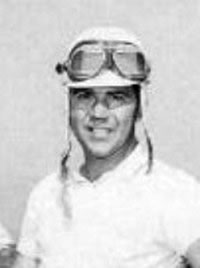
Ettore Muro Chimeri was a Formula One driver from Venezuela. He participated in one Formula One World Championship Grand Prix, the 1960 Argentine Grand Prix on February 7, 1960, in his Maserati 250F, failing to finish the race having experienced electrical problems after 23 of the race's 80 laps.
He scored no championship points.
Two weeks later Chimeri was killed while practicing for the Gran Premio Libertad sports car race at the Camp Freedom military airfield near Havana. His Ferrari crashed through barriers and plunged 45 meters into a ravine. Chimeri survived and was flown to hospital by helicopter, but he died there later that day.
Grand Prix Starts 1
Grand Prix Wins 0
Pole Positions 0
Grand Prix Points 0
1960 - Harry Schell (USA)
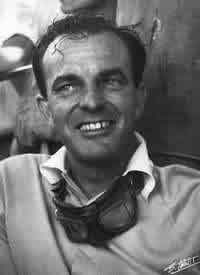
Henry O'Reilly Schell was an American Grand Prix motor racing driver. Schell went on to race in Europe, driving Coopers in Formula 3, Formula 2 and even the Formula One World Drivers' Championship upon its inception in 1950 and competed in 56 Grands Prix, his best result being second at the Dutch GP in 1958.
His first appearance was in a Cooper powered by a J.A.P. V-twin engine at Monte Carlo; it ended in an accident at the harbor chicane that involved the majority of the field. Schell carved out a reputation as a safe and prudent competitor and could be counted on as a consistent points scorer, but he also proved his class when the opportunity presented itself.
Schell died in practice for the non-championship International Trophy event at Silverstone in 1960, when he crashed his Cooper at Abbey Curve.
Schell was driving at approximately 160 kmh when his car slid into the mud on the side of the track and lost a wheel. The Cooper somersaulted and penetrated a safety barrier, causing a brick wall to collapse.
Prior to his death, Schell had been extremely vocal in the promotion of the roll-bar on European racing cars, a safety feature required in America in this time. By the 1500cc formula of 1961, it had become standard in Formula One.
Grand Prix Starts 56
Grand Prix Wins 0
Pole Positions 0
Grand Prix Points 32
1960 - Chris Bristow (GB)
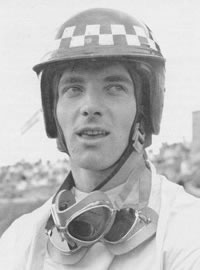
Bristow was the son of a London, England garage owner. Bristow was called the wild man of British club racing, as he had spun out or had collisions on almost every race track he had raced on. He started four Formula One World Championship races and scored no championship points.
He was killed during the 1960 Belgian Grand Prix at Spa-Francorchamps, in a gruesome accident at the Burnenville corner, in which he was decapitated, when the car rolled over.
Cars regularly speeded through the Burnenville corner at more than 200 kmh. There was an embankment there-four feet high and barbed wire in the meadow about ten feet back from the road. The Cooper of Bristow impacted the bank and he was hurled into the barbed wire, beheading him. The car then rolled and the driver's body was thrown out on to the track. Clark only narrowly missed running into it. He was fighting in his Cooper owned by the Yeoman Credit team, to stay in front of the Ferrari of Willy Mairesse.
Spa was the world's fastest road circuit and was 13 km in length in 1960. Bristow and Alan Stacey died in close proximity and within a few minutes of one another. They both failed to properly negotiate the same fast right hand bend in which Stirling Moss was severely injured the previous day braking his legs. But Alan Stacey was hit in the hed by the flying bird, and that lead to mistake.
Grand Prix Starts 4
Grand Prix Wins 0
Pole Positions 0
Grand Prix Points 0
1960 - Alan Stacey (GB)
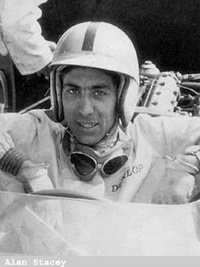
This British racing driver began his association with Lotus when he built one of the MkVI kits then being offered by the company. Having raced this car he went on to build an Eleven, eventually campaigning it at Le Mans under the Team Lotus umbrella. During the following years he spent much time developing the Lotus Grand Prix cars, most notably the front engined 16 and then the 18. He participated in 7 Formula One World Championship Grands Prix, debuting on 19 July 1958. He scored no championship points. He also participated in several non-Championship Formula One races.
Stacey was killed during the 1960 Belgian Grand Prix, at Spa-Francorchamps, when he crashed at 190 km/h after being hit in the face by a bird on lap 25, while lying in sixth place with his Lotus.
Stacey was driving the same type of Lotus as Stirling Moss, who was nearly killed on the previous day. He went off the road on the inside of a fast Burnenville corner, as he was heading towards the Malmédy section. The inside of a turn is where great forces push a car out. Stacey's Lotus climbed an embankment that was waist-high. It penetrated 3 meter of thick hedges and fell into a field where it caught fire. He died after few minutes. Everything happened in close proximity and six laps after Chris Bristow tragedy. Stirling Moss was severely injured the previous day braking his legs.
Grand Prix Starts 7
Grand Prix Wins 0
Pole Positions 0
Grand Prix Points 0
Sorted by the year:
Sorted by the year:
1950 - 1955, 10 drivers died
1956 - 1960, 20 drivers died
1961 - 1965, 6 drivers died
1966 - 1970, 18 drivers died
1971 - 1975, 10 drivers died
1976 - 1980, 3 drivers died
1981 - 1985, 5 drivers died
1986 - 1990, 2 drivers died
1991 - 1995, 3 drivers died
1996 - Today, 4 drivers died
To know more about safety in Formula 1, development in safety after incidents and tragedies, check article about safety.
Back to the top of the page






